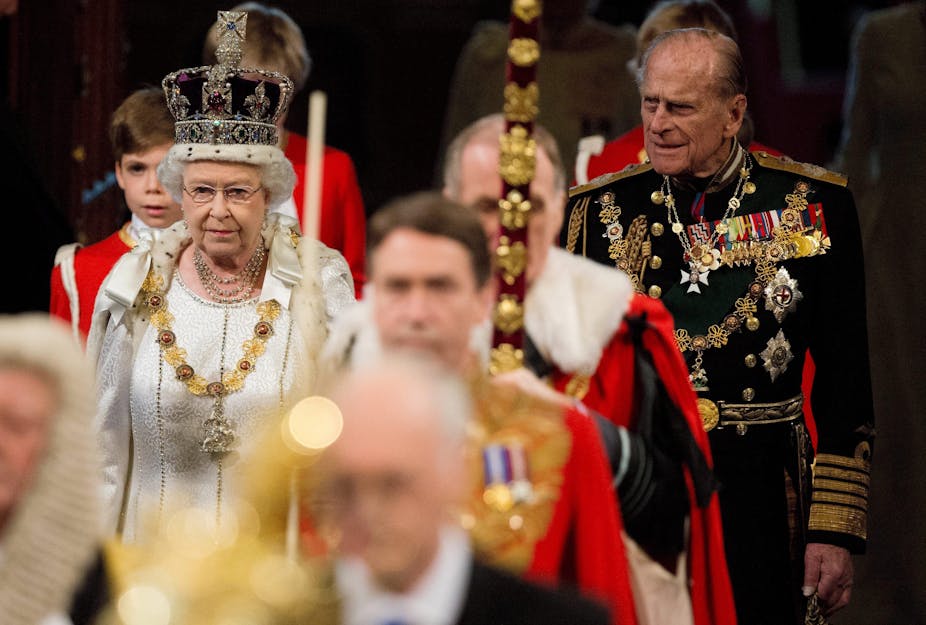This weekend, Britain will celebrate the Diamond Jubilee of Queen Elizabeth II. Bunting and cream cakes will turn neighbourhood roads into street parties and a flotilla of 1,000 boats will sail down the River Thames as a wave of nostalgia washes over the land.
Only one other British monarch has reached such a milestone. Elizabeth’s great-great grandmother, Victoria, was Queen for more than 63 years, from 1837 to 1901.
Although she was in frailer health than her great-great granddaughter, who at present shows no sign of slowing down, Victoria’s Jubilee was also an occasion for national – and imperial – celebration. Processing through the streets on her way to a service of thanksgiving, Victoria marked the event accompanied by her colonial premiers and regiments of Indian troops. “Up they came, more and more”, wrote a Daily Mail journalist, “an anthropological museum – a living gazetteer of the British Empire.”
Of course, the Britain of 2012 is very different to that of 1897. If, under Victoria, British rule extended to the far reaches of the globe, under Elizabeth II it has contracted, with the United Kingdom itself embracing devolution.
Although Elizabeth remains Queen of the Commonwealth, the country over which she rules now sees itself – if sometimes reluctantly – as part of the European community of nations. It is now not imperial troops, but immigrants from the Caribbean, South Asia and Africa who fill the streets of London.
But for all these differences, the reigns of Elizabeth II and Victoria share much in common. Both monarchs presided over periods of immense social, economic and technological change. In fact, historians frequently refer to the late 19th century as a period of “Victorian globalisation”. Like our own era, it was a time in which new technologies revolutionised global transport and communication, bringing far off parts of the world into close connection with each other.
Both Elizabeth II and Victoria are remarkable for having embraced these changes. Led by her husband, Prince Albert, Victoria was what we might call an early-adopter of the new technologies. She purchased photography equipment in 1848, tried the telephone in 1878 and celebrated her Jubilee by issuing a telegraph throughout the empire: “From my heart I thank my beloved people” it read, “May God bless them!”
Elizabeth II has been no different. She has a website, and also boasts a channel on YouTube, an official Flickr account, and a twitter handle (@BritishMonarchy if you wish to follow).
In a move her predecessor would presumably have welcomed, Elizabeth has even put Victoria online. You can find the Empress – including remarkable footage of the 1897 Jubilee – at www.queen-victorias-scrapbook.org.
Change, however, does not always mean improvement. The technological developments of the 19th century were part of major social and economic shifts that altered almost every aspect of life in Victorian Britain. Industrialisation created new markets and new forms of consumption, but it also displaced old ones.
It shifted working people off the land and into the cities, where they lived and laboured in squalid conditions and suffered from disease, crime and poverty. Millions suffered under the strictures of imperial rule, the wars it brought, and the notions of cultural superiority it entailed.
Similarly, in the second part of 20th century de-industrialisation has altered the working patterns of communities across the country, putting many people out of work, and forcing others to relocate and retrain. Digital technology has reshaped the way we live, but it has brought with it new social costs, and new questions about privacy and security. Many people feel alienated by the world of finance-capitalism, and although imperialism has formally ended, an unequal global division of labour remains.
If change is exciting, it can also be frightening.
In the midst of these vicissitudes Victoria and Elizabeth II positioned themselves as forces of stability and of continuity. They remade themselves and the monarchy to fit this changing world and in the process ensured their continuing relevance to it. By providing a tangible link between the past, the present and the future, both Victoria and Elizabeth II have symbolically tied together the frayed and fraying stories of all those who in some way look to them.
This has been their greatest achievement. And, in this year of Jubilee, it is also one of the reasons so many historians and commentators will be drawn to make a comparison between them.

